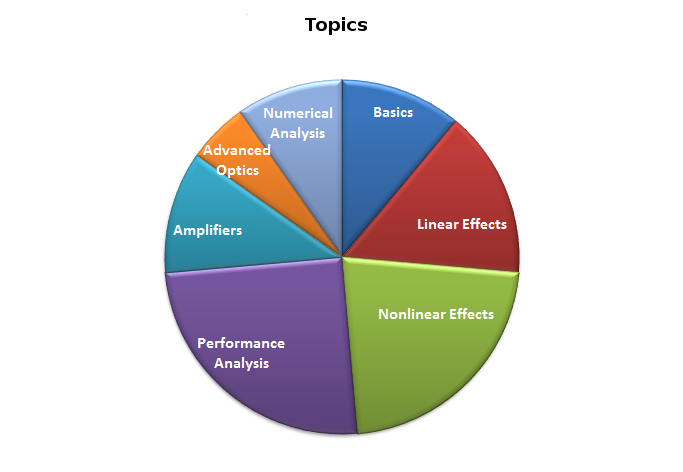Next: 2019
This course covers basic and advanced topics in optical communications. We begin by discussing optical modulators. Then we move to analyze the fiber optic channel in linear regime by focusing on impairments such as attenuation and group velocity dispersion (GVD). Next, we examine the amplification process within an erbium doped fiber amplifier (EDFA), both from a physical and a state model point of view. We also analyze the noise figure of an EDFA and its impact on system performance.
The next topic is the detection of an off-keying (OOK) signal, for which we provide an exhaustive analysis of the bit error rate (BER) evaluation in presence of different kind of noise sources (shot noise, amplified spontaneous emission noise, thermal noise). Basic models of direct-detection schemes will be proposed.
In the second part of the course, we analyze the nonlinear Kerr effect in optical fibers. We first provide a model for the Kerr effect by deriving the nonlinear Schrödinger equation, then we start a detailed analysis of each nonlinear effect separately: self-phase modulation (SPM), cross-phase modulation (XPM), four-wave mixing (FWM), modulation instability (MI), Raman effect. We analyze simple models for performance prediction in the nonlinear regime and their implications on system design.
We will also discuss a numerical algorithm to simulate the nonlinear propagation within optical fibers. Such an algorithm is one of the main algorithms of an open source software that will be used in this course by the students.
In this course, we also introduce polarization effects, both in the linear and nonlinear regime. In the first case, we analyze polarization mode dispersion (PMD), in the second cross polarization modulation (XPolM).
Finally, we analyze modern optical communication systems based on advanced modulation formats and coherent detection. We also enter in the details of the digital signal processing (DSP) unit and of its main building algorithms.
The course material is available at Elly.
